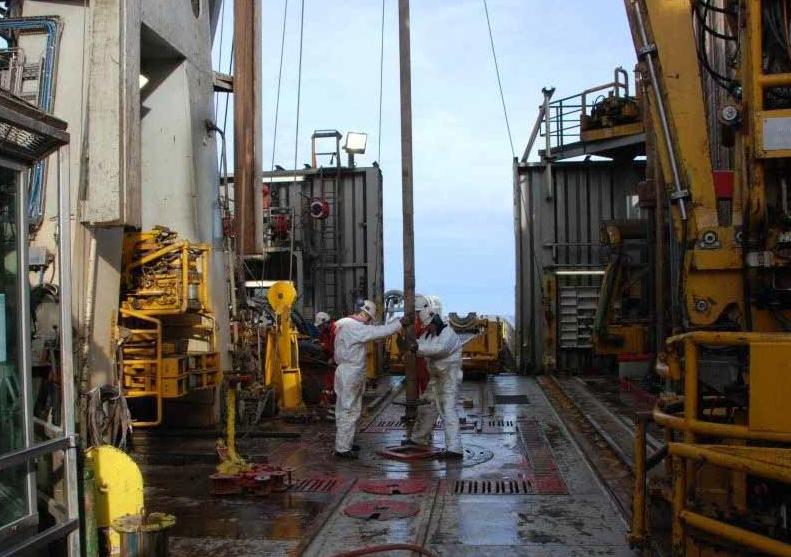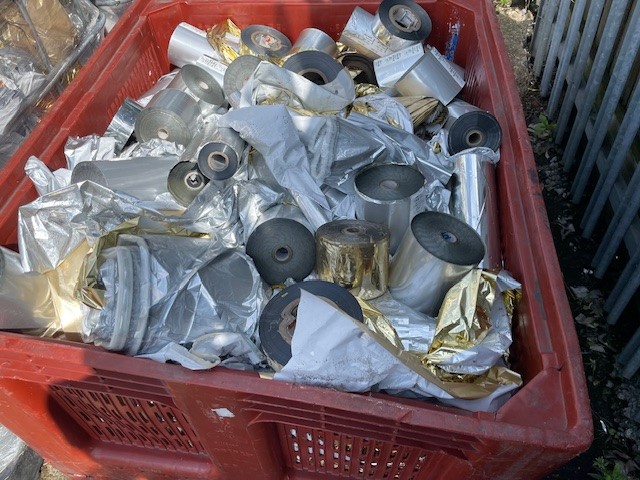
Until very recently, Greenland has been a sleeping giant with regard to oil and gas exploration. Hans Kristian Olsen and Stig-Morten Knutsen of the national oil company Nunaoil talk to Gay Sutton about the prospects for a significant discovery and how they will ensure the Greenlandic people will benefit.
Greenland is one of the world’s enigmas, and surely a fascinating tourist destination for the future. Located at the top of the world, where the Arctic meets the Atlantic Ocean, all but its coastal regions are buried under a massive permanent ice cap. Until now, it has been largely untouched by the Arctic oil race that has been unfolding in Canada, Alaska and Russia, seeing just nine exploration wells by early summer 2010 in its waters (which in size are comparable to the North Sea), over the past 40 years.
Greenland’s waters, however, might also have the potential to be highly productive, according to the frequently quoted CARA (Circum Arctic Resource Appraisal) study produced by the US Geological Survey, and interest is growing strongly among major international exploration companies. Twenty offshore exploration licences have already been granted to 12 different companies.
The national oil company of Greenland, Nunaoil, is a shareholder in each of the licences with 12.5 per cent (in some places eight per cent) equity and works closely with its partners to progress the exploration. “Our remit is to promote oil and gas exploration in Greenland, and enable the country to benefit from resources around our shores,” explains managing director Hans Kristian Olsen. With the Greenland economy currently reliant on the fishing industry, shrimp and halibut accounting for more than 90 per cent of exports, possible oil revenues will be of huge importance to the development of the nation, which has a population of only 56,500 people.
The last three years have seen a significant move towards this goal. Edinburgh-based exploration and development company Cairn Energy, which operates a number of licences off the west coast in partnership with Nunaoil, was awarded its first Greenland blocks in 2008. Cairn drilled three offshore exploration wells in 2010 and showed the presence of oil and gas. “Their results could indicate that we have a working hydrocarbon system offshore West Greenland. This is a very significant step forward for us,” says Nunaoil exploration manager Stig-Morten Knutsen. With these results under its belt, Cairn is continuing the exploration campaign and plans four further wells this year.
All of the 20 licence blocks currently granted by the Greenland government are located off the west coast and those blocks are huge, ranging from 8,000 to 13,000 square kilometres. “You could easily fit 20 North Sea blocks into some of these,” Knutsen comments. The conditions attached to the licences are very specific, and are designed to ensure a systematic approach to exploration and to provide opportunities for other companies to assess the acreage.
Lasting 10 years, licences are normally administered in three sub-periods; and the holders must relinquish 30 per cent of their holding between each sub-period. The current licences are mostly in the first sub-period, which involves geological and geophysical surveys and evaluations. During the second and third periods, the hope is that they will move to drilling operations and progressively focus their activities. By the time the exploration licence expires, and if all has gone well, they will make the decision to go on to exploitation and production.
For Nunaoil any shift from the exploration to the exploitation phase will be an important step in many ways. “From our perspective, if a commercial discovery is made and our partner decides to develop the field, we will have to decide whether or not to put our money on the table and participate in the development,” Olsen says. It will be a financially big decision for Nunaoil and of great economic significance to Greenland where the national strategy is to diversify the economy, breaking its reliance on a single product, and reducing its dependence on financial support from Denmark. Oil is set to play a major part in this.
The next offshore area to come up for bidding is a region believed to be highly promising, located to the north-east of Greenland. The first licences are to be offered preferentially within 50,000 square kilometres in 2012, to the Kanumas Group, which comprises Esso, Chevron, BP, Statoil, Shell and JOGMEC (Japan Oil, Gas and Metals Corporation). Blocks and acreage not taken up in the region will then go to an open round in 2013. “Normally, companies apply for an acreage with a technical programme and work programme detailing what they intend to do, proving they’re technically capable of working in the area, and offering a work programme of how they intend to mature the area further,” Knutsen explains.
In its role supporting the maturation of the Greenland oil industry, Nunaoil works closely with its licence holding partners, participating in every technical and operational committee meeting. “One of our strengths is that we partner with every licence holder so we probably hold the best and most complete overview of Greenlandic offshore petroleum geology. We have also accumulated a great deal of technical knowledge specific to Greenland, and this can be of great benefit to our partners. Our vision is to grow this capability and become a repository of knowledge for Arctic exploration—after all, we are the world’s northernmost national oil company,” Olsen says. “The other key aspect of our work is that we bring a great depth of local knowledge to the table and we act as the link between the oil industry and Greenlandic society and government.”
Of course, Arctic exploration has a number of unique technical and operational challenges, many of them associated with the extreme northern climate. “The environment is very harsh, with short summers, long, cold dark winters and winter sea ice and drifting icebergs at sea. Therefore offshore operations are limited to a number of months each year,” Knutsen explains. This is obviously a contributing factor to increased costs and will also most likely see exploration spin out over many years.
There is already a significant body of knowledge and experience in Arctic exploration, developed off the shores of north Canada and Alaska. “Many of our partners have been involved in Arctic exploration for a number of years. But in regions such as Alaska or North Slope, exploration takes place in very shallow water,” continues Olsen. “Here, the depths are more extensive, and can range from a few hundred metres to over 1,000 metres.” When this is combined with high winds and drifting icebergs, the challenges are obvious.
Greenland certainly has much going for it in terms of hydrocarbon exploration and development. Not only is it politically stable, but it also benefits from a highly transparent fiscal and regulatory system as part of the Nordic group of countries. From the safety and environmental perspective, the government demands that all licence holders operate to the ‘Norsok standards’, which were developed for the North Sea oil industry, and embody the latest standards of best practice in safety and cost effectiveness. Meanwhile, great care is taken to ensure seismic and drilling activity does not disturb the rich eco-diversity which includes whale and fish populations. Nunaoil, situated in Nuuk, Greenland, aims to bring local knowledge to these aspects of operations.
With Greenland’s oil industry still in its infancy, the infrastructure for exploration and development is still rudimentary. With no roads between towns, and ports not yet developed to accommodate exploration vessels, the supply chains for exploration companies tend to be long and challenging. Cairn, for example, has been using the port of Aberdeen in Scotland and occasionally St John’s in Newfoundland for its supplies. Furthermore, it has set up its own charter flight several times a week to and from Greenland for crew and personnel transportation related to its operations.
Looking to the future, if commercially productive regions have been identified, hopefully significant investments can be made to create an onshore service hub and oil facilities, and it’s then that the real benefits will begin to flow through to the people of Greenland.
Work over the last five years has certainly opened a window on what could develop into a significant discovery and oil resource, but this is only the beginning. “We have exploration licences in operation off the west coast and we will soon be launching them in the north-east; but we might also have prospects off the south-east coast and maybe even along the north coast that might be unveiled sometime in the future. So, depending on factors such as oil prices and interest from oil companies, we expect exploration to continue for many years to come along the Greenland coast,” Knutsen concludes.
The next few years look set to be interesting. If only a few of these vast licence blocks turn into productive oil wells, then Nunaoil will have a great deal of work on its hands and Greenland is likely to change forever. http://www.nunaoil.gl/












